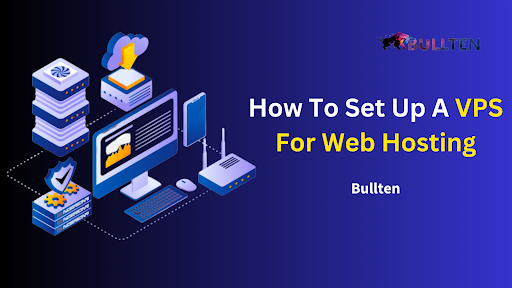Introduction
Setting up a VPS for web hosting is like renting your own piece of the internet. Compared to shared hosting, it provides greater security, control, and customization. We’ll explain everything in this tutorial and provide you with a road map for a successful website launch.
Choosing the Right VPS Provider
Before you start, it’s essential to choose a reliable VPS provider. Consider factors like pricing, server locations, customer support, and user reviews. Look for providers like DigitalOcean, AWS, or Linode, known for their quality services.
Factors to Consider
- Server Location: Pick a location closest to your target audience for faster load times.
- Pricing Plans: Assess your budget and requirements to select the right plan.
- Scalability: Ensure your provider can accommodate your website’s growth.
- Customer Support: 24/7 support is crucial for resolving issues promptly.
Selecting an Operating System
The choice of an operating system depends on your familiarity and website needs. Popular options include Ubuntu, CentOS, and Debian. Choose one that suits your comfort level.
Accessing Your VPS
Usually, Secure Shell is used to access your VPS (SSH). The IP address of your server and the SSH key you created with your VPS provider are required. Refer to their manual for instructions.
Using SSH
- Open your terminal.
- Use the command ssh your_username@your_server_ip.
- Enter your SSH key passphrase when prompted.
Securing Your VPS
Security is paramount. Start by configuring a firewall and keeping your server up to date. This protects your VPS from potential threats.
Firewalls and Updates
- Firewalls: Use tools like UFW (Uncomplicated Firewall) to define access rules.
- Updates: Regularly update your OS and software for security patches.
Installing a Web Server
The choice between Apache and Nginx often depends on personal preference. Both are capable, but Nginx is known for its efficiency and speed, while Apache is more user-friendly.
Configuring DNS Settings
Configure your domain’s DNS settings to point to your VPS. This step involves creating an ‘A’ or ‘CNAME‘ record at your domain registrar, directing traffic to your server’s IP address.
Creating Virtual Hosts
Virtual hosts allow you to host multiple websites on a single server. Configure them to manage various websites or applications hosted on your VPS.
Uploading Your Website Files
To upload your website, use a file transfer method like FTP or SFTP. Popular tools include FileZilla or WinSCP.
FTP or SFTP
- Download an FTP/SFTP client.
- Enter your server details and credentials.
- Transfer your website files to the server.
Setting Up Databases
For dynamic websites, you’ll need a database. MySQL and PostgreSQL are popular choices. Install your preferred database and create databases, tables, and users as needed.
Optimizing Performance
Optimizing your server ensures speedy page loads and a better user experience. Consider implementing caching, compression, and image optimization techniques.
Caching and Compression
- Caching: Use tools like Redis or Memcached.
- Compression: Enable GZIP for smaller file sizes.
Installing SSL Certificates
Website security is paramount. Learn how to install an SSL Certificate to encrypt data and secure your visitors’ information.
Monitoring Your VPS
Monitoring tools like Prometheus or Grafana help keep an eye on server performance. Set up alerts to notify you of issues.
Backups and Disaster Recovery
Always have a backup plan. Regularly back up your data and create a disaster recovery strategy in case of server failures.
Best Practices
Automate Backups: Use scripts or tools to schedule automated backups.
Off-Site Storage: Store backups off-site for added security.
Scaling Your Hosting
As your website grows, you may need to upgrade your VPS resources. Many providers offer seamless scaling options to accommodate increased traffic and resource demands.
Conclusion
Although configuring a virtual private server (VPS) for web hosting may appear difficult, with the correct help, even novices can handle it. You’ll be better prepared to handle your website after it’s up and running on a VPS by following these steps.
Now that you know, go ahead and use a VPS to begin your web hosting adventure. Cheers to your successful hosting!
FAQs
1. Do I need technical expertise to set up a VPS for web hosting?
Setting up a VPS can be a technical process, but our guide simplifies the steps, making it accessible even to beginners. You’ll learn as you go!
2. What’s the difference between a VPS and shared hosting?
With a VPS, you have dedicated resources, while shared hosting means you’re sharing resources with other websites. VPS offers more control and scalability.
3. Can I change my VPS plan if my website’s needs change?
Absolutely! The majority of virtual private server companies let you change your plan to better suit your website’s evolving resource needs.
